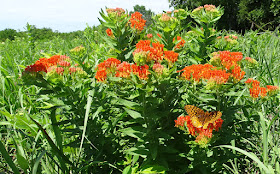It’s summer time and we don’t need to tell you that we are in the middle of a heat wave. It’s hot outside and heat advisories and warnings are in effect. The dangers of being exposed to heat for long periods are fresh on our minds.
But even when the weather is slightly cooler, danger still
exists, especially when a child, pet or vulnerable person are trapped in a car.
According to Safe Kids Kansas, every 10
days in the United States, a child dies when they are left alone in a vehicle and
hundreds of animals also lose their lives every year.
According to the Humane Society Legislation Fund (HSLF) we now have more information
about why it is so dangerous:
- 80% of the temperature increase inside a hot car happens in the first 10 minutes.
- Cracking a window has been proven to not slow down the heating process or decrease the car’s maximum temperature.
- A child’s body temperature rises 3 to 5 times faster than an adult.
- Since pets do not sweat the way we do, they cannot cool their bodies efficiently. An animal can sustain brain damage, organ damage or failure or die from a heatstroke within just 15 minutes of being trapped in a hot car.
The HSLF says that when it comes to rescuing an individual or pet trapped in car, time is critical.
"Because heat-related deaths can happen quickly, KS HB 2516 passed during the 2018 legislative session," The HSLF said. "This new law grants good Samaritans the legal right and immunity (under certain conditions) from civil liability to rescue a vulnerable person or domestic animal (livestock not included) from a locked vehicle when the individual believes that the person or animal is in imminent danger unless saved."
"Because heat-related deaths can happen quickly, KS HB 2516 passed during the 2018 legislative session," The HSLF said. "This new law grants good Samaritans the legal right and immunity (under certain conditions) from civil liability to rescue a vulnerable person or domestic animal (livestock not included) from a locked vehicle when the individual believes that the person or animal is in imminent danger unless saved."
This new law goes into effect July
1, and Kansas will join 20 other states who protect good Samaritans from legal retribution
for assisting people or animals in imminent danger who are trapped in a hot
car.
Events have been held across the state to help educate the public about the new law. On Monday, KidsandCars.org partnered with the HSLF and Safe Kids Kansas to answer questions and demonstrate how to safely exercise their right to rescue a trapped person or animal from a hot car.
Miranda Pratt, the HSLF Development Director said that they also used the platform to bring awareness to the dangers of hot vehicles.
"Every year, at least 37 children and dozens of animals die from vehicular heat stroke," Pratt said. "We hope that the new law will help lower that statistic and empower the Kansas community to act quickly to rescue a child or animal trapped in a hot car without fear of legal retaliation. Educating our community on this issue and how they are empowered through the new law is key.
Hot car deaths are 100% predictable and preventable."
 |
| Hot car deaths are preventable, breaking a window may save a life and the new law will protect Kansans who exercise their right to save someone from dying. (Photo Courtesy of John Reeves, KDHE) |
Events have been held across the state to help educate the public about the new law. On Monday, KidsandCars.org partnered with the HSLF and Safe Kids Kansas to answer questions and demonstrate how to safely exercise their right to rescue a trapped person or animal from a hot car.
Miranda Pratt, the HSLF Development Director said that they also used the platform to bring awareness to the dangers of hot vehicles.
"Every year, at least 37 children and dozens of animals die from vehicular heat stroke," Pratt said. "We hope that the new law will help lower that statistic and empower the Kansas community to act quickly to rescue a child or animal trapped in a hot car without fear of legal retaliation. Educating our community on this issue and how they are empowered through the new law is key.
Hot car deaths are 100% predictable and preventable."
Cherie Sage, State Coordinator for Safe Kids Kansas, said that in more than 50 percent of all the cases where a child died from heatstroke in a vehicle, they were accidentally left behind.
"Any parent would be grateful to a bystander for taking action that might save their child from a horrific death," Sage said.
According to the HSLF before exercising your right to
save a child, vulnerable person or animal, please be sure to check the following:
- Is the car locked?
- Is the person or animal suffering in imminent danger?
- Have you notified local law enforcement?
- Are you using reasonable force to break entry?
- Can you remain with the person or animal until law enforcement arrives?
- Is the animal in question domestic? This law does not apply to livestock animals.
Remember, the first line of defense when it comes to
heat-stroke safety is to prevent it from happening in the first place. NEVER
leave your child or pet in a car, even when you don’t believe it’s that hot
out.
Here is a short video from WIBW out of Topeka that explains how to help safely:
http://www.wibw.com/content/news/Minutes-matter-What-you-need-to-know-to-get-kids-pets-out-of-hot-cars-486898511.html





























